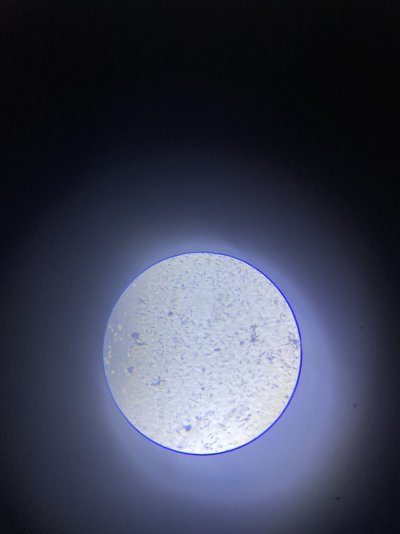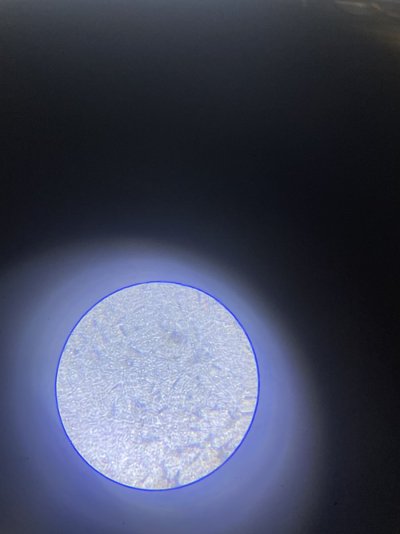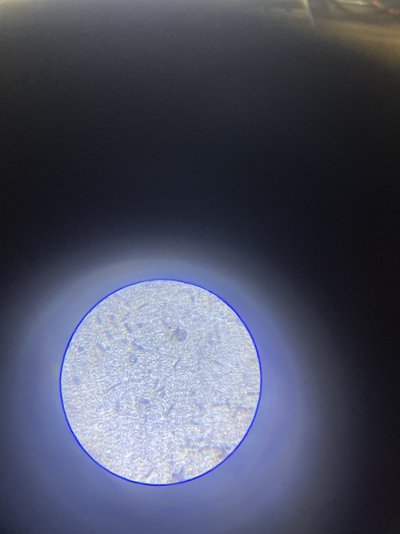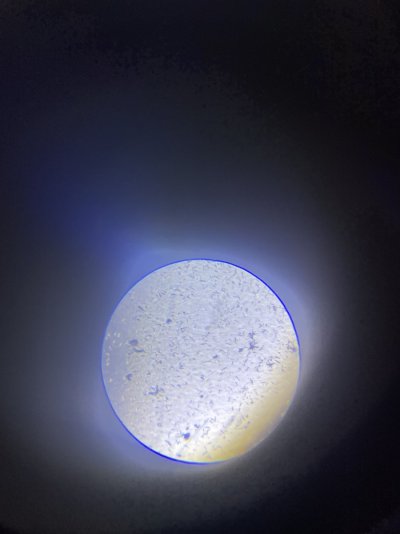Hi all, first post here, and relatively new to the hobby as well.
My tank (25G) is a very, very new tank, being about a month old.
My current Parameters are as follows:
Salinity: 1.025
Temp: 27 - 29 degrees celcius over course of day
Ammonia: 0.15
Nitrates: 0.25 - 0.5
Phos: 0.1 - 0.25
Mg: 1440
Calcium: 440
Alkalinity: 8.3
Stocking:
pair of clownfish
4 astrea snails
3 red legged hermit crabs
I recently had an outbreak of Dinos, caused by a number of factors:
1. Low bacterial load - started with live sand BUT dry rock (which I regret), and Nite Out II to cycle the tank.
2. Over skimming
3. Turned lights on early into cycling
4. Zero phosphates at the time with 0.25 nitrates
To be transparent, (1) and my impatience in having clowns into the tank were a large contributing factor for causing the dino outbreak, and if I could have done things differently, I would have started with live Rock, and cycled the tank for longer without any lights.
The Dinos appeared probably a week into the tank’s existence. Since then, I did quite a bit of reading on the forums on how to combat them.
Identification - i believe they were LCAs. Unfortunately my microscope only arrived after they had receded with the diatom bloom, but I say this with a degree of confidence because they were purely in my sand bed and rocks and not in the water column. Moreover, my CUC did not die from eating the nuisance algae on the sand bed.
Course of action - I started with a manual removal of whatever LCAs I could see on my sand bed and rocks. Then I did a 3 day blackout, and started to heavily feed my clownfish (2 mysis cubes a day). By the end of the blackout, the LCAs had receded, but that was not the end. I continued to overfeed to increase the bacterial load, and started to encourage diatom growth by doing a minor dose of Neonitrate and Neophos. I did not add silica. I also added the recommended dose of Phyto Feast daily, as well as random cups of copepods into the tank. I also started to dose Microbacter 7 daily at the recommended dosage. I bought a UV light just in case but understand that they are not as effective against LCAs who burrow into the sand.
After a week of following the above, I noticed a growth of film algae on my glass after the first Couple of days. Then a separate growth of what appeared to be brown algae on my sand. As of today, i am experiencing a diatom bloom on my sand bed and still have left the film algae on my glass, which has since expanded. There still (by my naked eye) very few small snotty strands LCAs, but when I try to view it under the microscope, I see more of the diatoms rather than the LCAs. I say this because I see more of the short lined cells rather than the round circle shaped LCA cells that others have identified as dinos on other posts. Attaching samples of what I see under my scope, sorry if it is not the clearest shot.
More recently, under the microscope, I have noticed that the short lined cells have overtaken any trace of the round cells, hence my belief that the algae I see on my walls and send bed are diatoms.
My query is: when should I clear my sand bed and walls of the diatom bloom and stop keeping the nutrient levels elevated?
My suspicion is that the tank is basically going through an “uglies” phase (which it should rightly have gone through at the very start but for my impatience), and I should leave it for some time, keep over feeding and dosing phyto, the pods and the MB7, slowly cut back on the nitrates and phos (but not reduce it to zero). If this is correct, this means that at some point the bacterial load in the tank will balance itself out and the bloom go away on its own. I can appreciate that it is a supposedly fine balance since all forms of algae balance each other out in a healthy system.
However, if I keep over feeding and dosing phyto + MB7, wouldn’t the diatom bloom continue to persist as nutrients in the water remain high?
Any thoughts on how to go from here? Impatience got me into this mess with dinos , and I do not intend to make the same mistake again, and can handle a “dirty” looking tank for some time, but certainly not forever haha.
Grateful to hear your views on this. Thanks all




My tank (25G) is a very, very new tank, being about a month old.
My current Parameters are as follows:
Salinity: 1.025
Temp: 27 - 29 degrees celcius over course of day
Ammonia: 0.15
Nitrates: 0.25 - 0.5
Phos: 0.1 - 0.25
Mg: 1440
Calcium: 440
Alkalinity: 8.3
Stocking:
pair of clownfish
4 astrea snails
3 red legged hermit crabs
I recently had an outbreak of Dinos, caused by a number of factors:
1. Low bacterial load - started with live sand BUT dry rock (which I regret), and Nite Out II to cycle the tank.
2. Over skimming
3. Turned lights on early into cycling
4. Zero phosphates at the time with 0.25 nitrates
To be transparent, (1) and my impatience in having clowns into the tank were a large contributing factor for causing the dino outbreak, and if I could have done things differently, I would have started with live Rock, and cycled the tank for longer without any lights.
The Dinos appeared probably a week into the tank’s existence. Since then, I did quite a bit of reading on the forums on how to combat them.
Identification - i believe they were LCAs. Unfortunately my microscope only arrived after they had receded with the diatom bloom, but I say this with a degree of confidence because they were purely in my sand bed and rocks and not in the water column. Moreover, my CUC did not die from eating the nuisance algae on the sand bed.
Course of action - I started with a manual removal of whatever LCAs I could see on my sand bed and rocks. Then I did a 3 day blackout, and started to heavily feed my clownfish (2 mysis cubes a day). By the end of the blackout, the LCAs had receded, but that was not the end. I continued to overfeed to increase the bacterial load, and started to encourage diatom growth by doing a minor dose of Neonitrate and Neophos. I did not add silica. I also added the recommended dose of Phyto Feast daily, as well as random cups of copepods into the tank. I also started to dose Microbacter 7 daily at the recommended dosage. I bought a UV light just in case but understand that they are not as effective against LCAs who burrow into the sand.
After a week of following the above, I noticed a growth of film algae on my glass after the first Couple of days. Then a separate growth of what appeared to be brown algae on my sand. As of today, i am experiencing a diatom bloom on my sand bed and still have left the film algae on my glass, which has since expanded. There still (by my naked eye) very few small snotty strands LCAs, but when I try to view it under the microscope, I see more of the diatoms rather than the LCAs. I say this because I see more of the short lined cells rather than the round circle shaped LCA cells that others have identified as dinos on other posts. Attaching samples of what I see under my scope, sorry if it is not the clearest shot.
More recently, under the microscope, I have noticed that the short lined cells have overtaken any trace of the round cells, hence my belief that the algae I see on my walls and send bed are diatoms.
My query is: when should I clear my sand bed and walls of the diatom bloom and stop keeping the nutrient levels elevated?
My suspicion is that the tank is basically going through an “uglies” phase (which it should rightly have gone through at the very start but for my impatience), and I should leave it for some time, keep over feeding and dosing phyto, the pods and the MB7, slowly cut back on the nitrates and phos (but not reduce it to zero). If this is correct, this means that at some point the bacterial load in the tank will balance itself out and the bloom go away on its own. I can appreciate that it is a supposedly fine balance since all forms of algae balance each other out in a healthy system.
However, if I keep over feeding and dosing phyto + MB7, wouldn’t the diatom bloom continue to persist as nutrients in the water remain high?
Any thoughts on how to go from here? Impatience got me into this mess with dinos , and I do not intend to make the same mistake again, and can handle a “dirty” looking tank for some time, but certainly not forever haha.
Grateful to hear your views on this. Thanks all




















